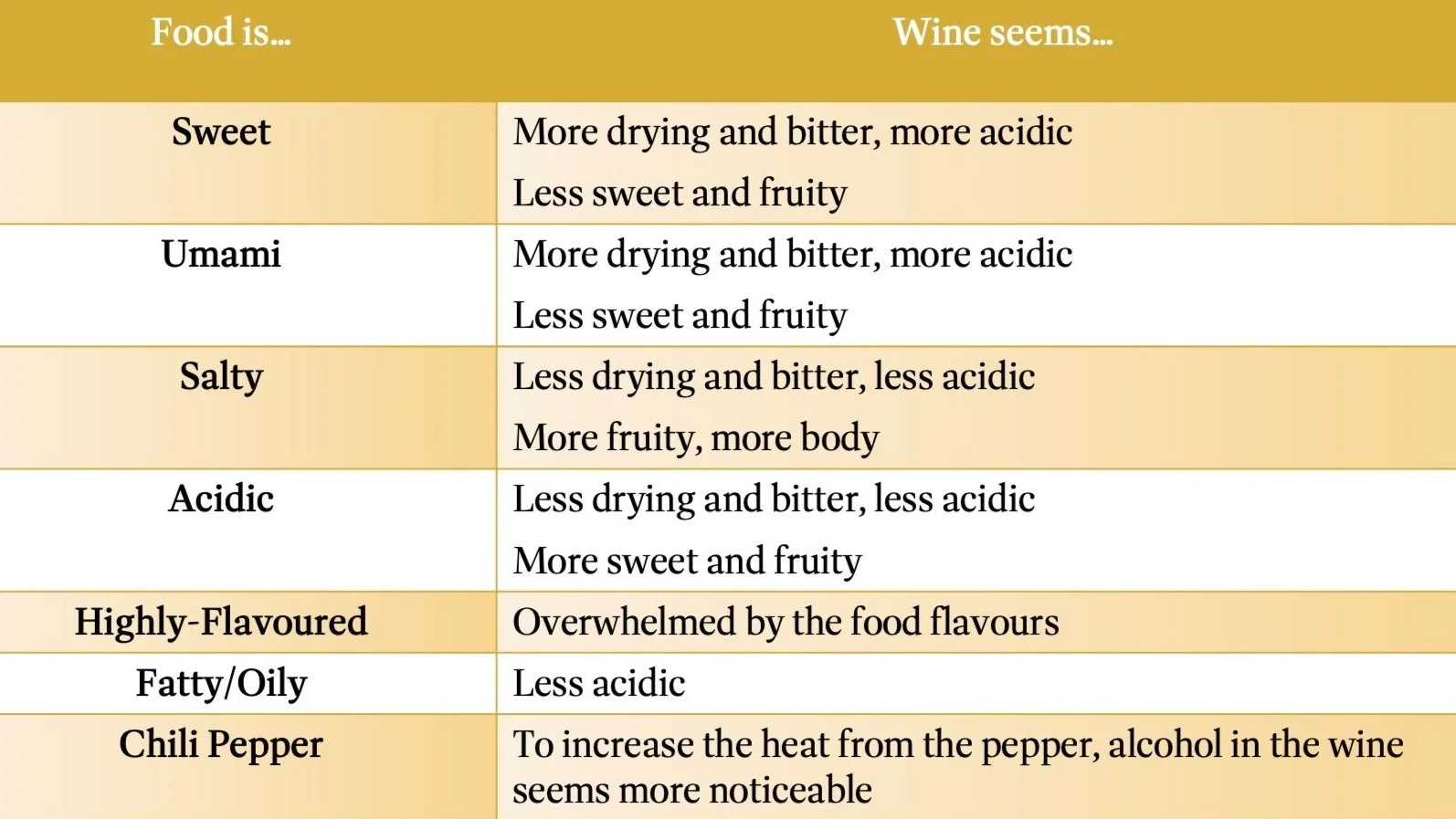The Art and Science of Food & Wine Pairing
Some of our most memorable dining experiences are as a result of successful food and wine pairings, well-orchestrated interplays of flavours, textures and qualities where the food and wine are more enjoyable together than they would be apart.
The art of food and wine pairing has existed almost as long as winemaking has been around, and is said to have developed during times when wine became a beverage staple, as it was then cleaner to consume than water in many areas across the world. What is evident is that, within each wine-producing region, the cuisine and wine have both evolved to complement (and be enjoyed with) each other.
In more modern times, food and wine pairing became more of a science (though not an exact one)! Though there is some truth to the general statement that ‘white wines should be paired with fish and red wines with meats’, there is quite a bit more to be considered. This well-known rule does highlight the importance of the weights, intensities and complexities of food and wine individually, but we must also consider their individual characteristics, how these characteristics interact one with each other, and how these interactions can be positively or negatively experienced by individuals.
In wine, the key characteristics for consideration are fruit, sweetness, acidity, tannin (bitter) and alcohol, and in food, they are sugar, acid, salt, fat and bitter. Generally, food has more impact on the way a wine tastes that the other way around, the impact more likely to be negative than positive. The table below highlights the general impact of food’s main characteristics on wine:
Sweetness. Food containing sugar should generally be paired with a wine that has a higher level of sweetness.
Umami. Umami is quite distinct from the other primary tastes (salt, acid, etc), and can be difficult to isolate since it tends to be present with other tastes such as salt that can balance the negative effects of umami.
Bitter. Though most foods will be unlikely have an extremely bitter taste, bitter tastes add to each other. Food with a bitter element and wine with a bitter element may have low levels of bitterness when tasted individually but, when paired together, the overall sensation may be overly bitter. Consider balancing the bitterness of food with a very fruit-forward or slightly-sweet wine. Since sensitivity to bitter tastes varies greatly from person to person, the effect of such combinations will be very subjective.
Chili/Pepper. The levels of sensitivity to the warming or burning sensation of chilli/pepper can vary greatly from person to person, with significant variation in how pleasant or unpleasant the effect can feel. Since the sensations caused by chilli/pepper are greater with wines with high alcohol levels, they are (often) better paired with those with lower alcohol levels (as some people may enjoy the former)!
Flavour Intensity. The flavour intensities in both food and wine should match so that one does not overpower the other.
While the science can provide insights on which food and wine pairings may be ideal for most, there is no there is no one-size-fits-all answer. With so many types and wines to choose from, and so many variations in individual sensitivities and preferences in both food and wine, there are endless possibilities. So, feel free to follow the rules for classic and complimentary pairings, or to push the envelope and experiment with contrasting food and wine combinations for new and dynamic experiences!



